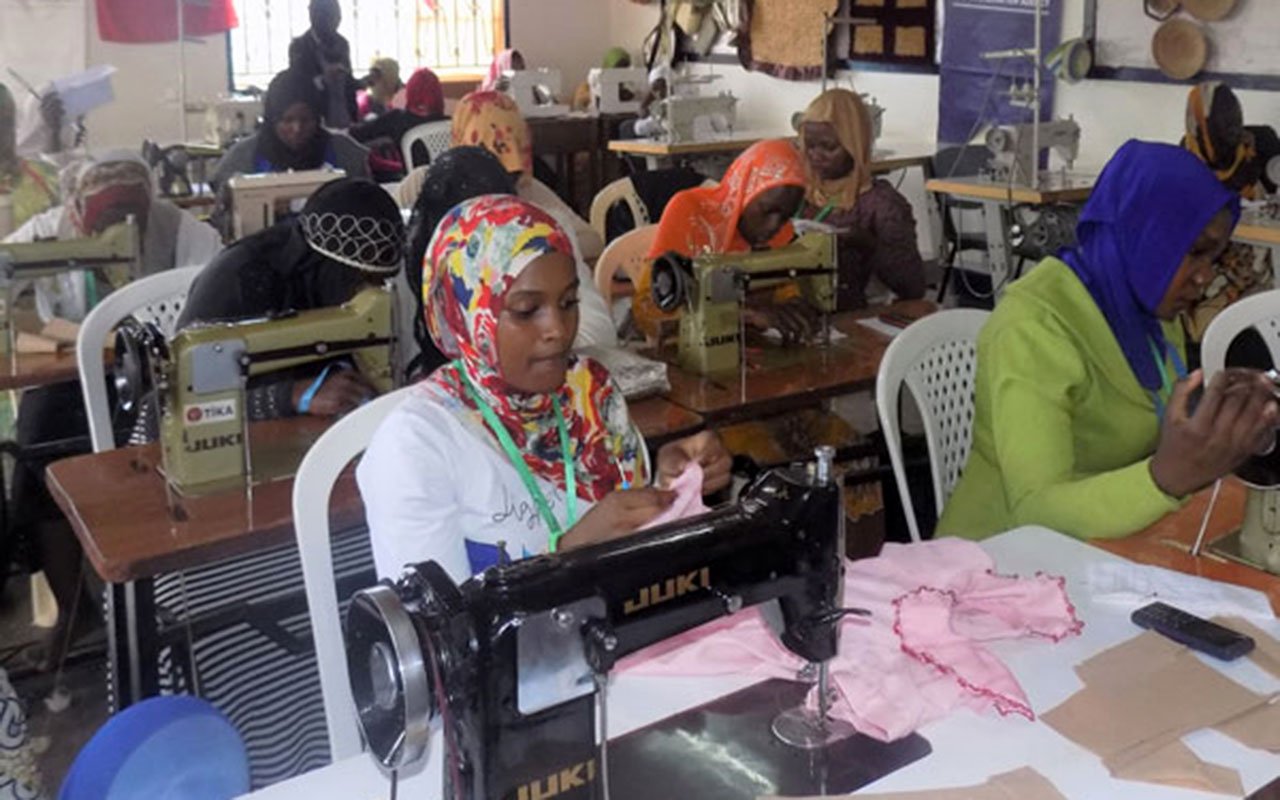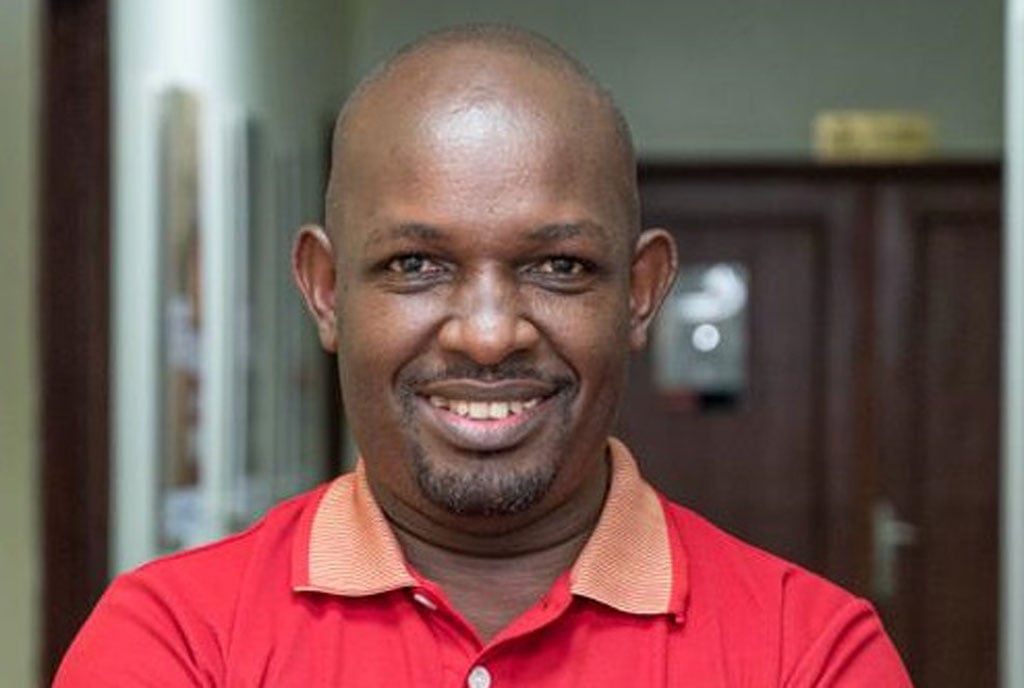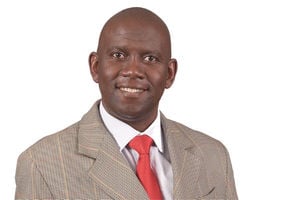
Women learn tailoring. Uganda’s young population grapples with high unemployment due to a lack of jobs meant to match its growth rate. PHOTO/FILE
Uganda's young population grapples with high unemployment due to a lack of jobs meant to match its growth rate, something that has fuelled social unrest and youth frustration, compounded by rising demand for quality education, healthcare, and social services, straining government resources.
Without investing in skills and entrepreneurship, Uganda risks losing the economic potential of its youth bulge. The country has a Vision 2040 that aims to transform it from a peasant economy to a modern, prosperous nation, targeting a rise in per capita gross domestic product from $506 (Shs1.8m) in 2010 to $9,500 (Shs35m) by 2040.
The state’s long-term development plan focuses on investments in infrastructure, education, healthcare, agriculture, and industrialisation to drive economic growth, reduce poverty, and improve quality of life through innovation, sustainability, and good governance. It, however, acknowledges the challenges posed by a rapid population growth, a young age structure, including high child dependency, something that could hinder progress.
The country aims to grow its economy ten-fold from $49.5b in the financial year (FY) 2023/2024 to $500b in 15 years, with an overall improvement of livelihoods. The Finance ministry has repeatedly stated that harnessing the country’s demographic dividend by tapping into its young population is pivotal to such plans.
The National Population Council echoes this, noting that realising the potential of Uganda's youthful demographic requires timely investment.
Mr Ramathan Ggoobi, the Finance ministry’s Permanent Secretary and Secretary to the Treasury, has previously said his ministry is focused on investing in human capital and wealth creation through initiatives such as the Parish Development Model (PDM), Emyooga, among others. The government has invested more than Shs1.2 trillion in the aforementioned initiatives.
According to Mr Samuel Omwa Samson, Ag director general of the National Population Council, the strategy focuses on ensuring that the youth are healthy, well-educated, skilled, and productive, either by taking up jobs or becoming entrepreneurs. He said a larger working-age population boosts the gross domestic product (GDP) of a country and raises incomes, as workers can save and invest instead of supporting a large dependent population.
This was during the launch of the second cohort of the young women social entrepreneurship accelerator programme in Kampala.
Mr Omwa, however, added that an accelerated economic growth can only occur when fertility rates decline, leading to a larger working-age population. Yet data from Uganda's statistics body puts the country’s population at 45.9m, with 71.5 percent (32.9m) under the age of 30. Another datapoint shows that only 15.1 million people, or 32.9 percent, are in the productive age range of 25 to 64 years, which is not ideal for the country's goals. Young people are seen as key drivers of economic growth, not only as consumers of goods and services but also by bringing fresh ideas and innovative solutions to social and economic challenges. Their potential extends to leadership and governance, which can fuel entrepreneurship, job creation, and economic expansion.
However, the rapid growth of the youth population also creates challenges, increasing demand for employment and placing pressure on social services like healthcare, education, and housing, heightening the need for urban infrastructure to accommodate their needs.
“A young population is frequently associated with a high dependence ratio, meaning that the proportion of children to working-age individuals is higher. There is a greater demand on resources like food, energy, and water due to the expanding young population. And large numbers of young people who are disillusioned or unemployed can fuel protest movements, social unrest, and even political upheavals,” Mr Omwa said.
Uganda's challenge lies in its rapid population growth, at 2.9 percent annually, doubling every 20 years. In 2023, the economy grew by 4.6 percent, driven by strong mining, construction, and hospitality sectors. However, slower manufacturing and declines in food production and public administration dampened overall growth.
Economists argue that Uganda's economic growth must triple the population growth rate to spur real development. In the first quarter of the FY 2024/2025, the country’s GDP grew by 5.3 percent, boosted by oil-related construction and robust agriculture, despite weather challenges.
The World Bank projects a six percent GDP growth for the FY 2024/2025, which may help counter the high child dependency burden, as 43.7 percent of Uganda's population is under 15.
The National Population Council says that it desires a population structure where most citizens are aged 30 to 50, across both genders, with numbers gradually decreasing as the population ages. Government advisers agree that social entrepreneurship is a crucial pillar for driving Uganda's economic growth agenda. It involves individuals or organisations creating solutions to social, cultural, or environmental issues, with the primary goal of fostering positive social change.
Key aspects include innovative problem-solving, prioritising societal goals over profit, and ensuring long-term sustainability.
In Uganda, social entrepreneurship has gained momentum in the past decade, spurred by social needs, economic challenges, and a young population eager to drive meaningful change.
The country currently ranks fourth in East Africa and 95th globally in the Startup Ecosystem Index Report 2024, driven by a young population and a robust entrepreneurial culture. Notable startups like Safe Boda have attracted major support from entities such as Google Fund, as a result.
Government initiatives, including the National ICT Initiatives Support Programme and the Hi-Innovator fund by the National Social Security Fund (NSSF), provide essential grants and funding. The National ICT Innovation Hub also supports ICT innovators with reliable internet and workspace.
Additionally, corporations like MTN Uganda, along with startup accelerators such as Stanbic Business Incubator and Outbox Hub, significantly contribute to nurturing entrepreneurship.
Social enterprises tackle diverse challenges such as poverty, unemployment, healthcare access, education, and environmental sustainability and some successful initiatives in Uganda include SafeBoda, Jumia, Rocket Health, Tugende, and Capital Solutions Limited.
Mr Omwa said for social entrepreneurship to thrive it is crucial to deliberately empower the youth with the skills and knowledge necessary for entrepreneurship, given that a significant portion of Uganda's population is young.
“Whereas the development frameworks have the potential to position the country in the demographic dividend pathway, statistics reveal that there is more effort needed to translate these strategies into demographic dividend prospects,” he said.
“The high mortality of businesses questions the sustainability of their existence in the country to further contribute to economic development. In order for a country to attain a demographic dividend, the tenet of decent employment and income must be sustained for almost a decade. The collapse of businesses even before their first birthday takes the country backwards and requires that the youth are empowered to start afresh,” he added.
The National Population Council cites President Museveni’s idea that investing in education, especially in Science, Engineering, Technology and Mathematics fields, fosters innovation.
It also points to the fact that promoting entrepreneurial education is vital for equipping youth with the skills to start and sustain businesses. This, they say, can be achieved by integrating entrepreneurship into school and university curricula to cover business planning, financial management, and innovation.
Additionally, hands-on training and connecting young entrepreneurs with experienced mentors can provide practical experience and valuable guidance.
“Providing access to funding, business incubators, and networking opportunities can help young entrepreneurs turn their ideas into successful ventures,” Mr Omwa said, adding that the government needs to provide tax incentives, reduce bureaucratic hurdles, and ensure market access for social entrepreneurs.
This issue was highlighted recently when President Museveni mentioned that the state has allocated funds to the Uganda Development Bank for manufacturers and agriculture. While these funds are intended for high-end investors, there have been no reported benefits reaching the wider public from the bank's support. The country’s Gender ministry strongly believes that social entrepreneurship innovation is crucial for harnessing Uganda’s demographic dividend.
By leveraging creativity, technology, and collaboration, it aims to "unleash youth potential, drive sustainable development, and lead Uganda to middle-income status," while addressing pressing social issues such as early and forced marriage, postpartum haemorrhage, unpaid work for women, labour exports, and modern human trafficking.
Women learn tailoring. Uganda’s young population grapples with high unemployment due to a lack of jobs meant to match its growth rate. PHOTO/FILE




